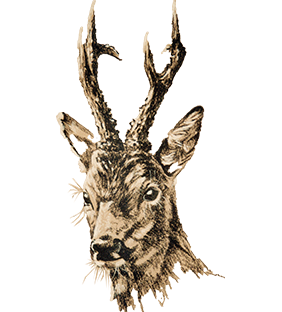Roe deer
The roe deer (Capreolus capreolus) is one of the most numerous representatives of roe deer in Slovakia. It occurs on more than 90% of the territory of Slovakia, from lowlands to high mountain locations, on both forest and field land.
We classify the roe deer among the furred animals, at the same time it is our smallest representative of the cervids.
The roe deer feeds on similar food as its larger relatives from this family - the deer and the fallow deer. Roe deer prefer easily digestible food rich in protein.
They obtain minerals by licking the clay or salt in the feeders. Their small body has a large surface area concerning their weight, which gives off a lot of heat energy. Therefore, roe deers need more food per mass unit than red deers or fallow deers. Hunting specialists call them "picky eaters". This means they are always looking for highly nutritious plants or sprouts to minimize their intake of unnecessary, hard-to-digest ballast. It can be said that roe deers are quite "finicky eaters".
Roe deers have a reddish-brown to yellow-brown color and a white mirror in summer. In the winter, the fur changes to a gray-brown to gray color. Fawns have classic bright stains after birth, which disappear in August. As the roe deer ages, the mask gradually grays, which makes it easier for hunters to determine the age.
Roe deers have the smallest antlers among all species of antlered animals living in our territory. The trunk is on average 20 to 30 cm long, and only very rarely does a roe deer grow antlers stronger than a six-pointed one. Roe deers beat out their antlers by rubbing on trees already in April, at the beginning of May at the latest. They shed antlers in October and December.
Roe deer is an important game animal. The roe deer hunt is the start of the antlered game hunting season, so many hunters look forward to May 16th every year when the roe deer hunting season begins. Just like hunting for other animals, deer hunting has its specifics. Roe deer is a strongly territorial species. He has been marking and protecting his space from other males since March. The roe deer maintains this territorial behavior until the rut, which takes place from July to mid-August. Such behavior allows responsible hunters to "walk out" that "own" roe deer, and thus read the antlers and general appearance of the roe deer and correctly determine the suitability of the catch. Each deer trophy, regardless of its point value, is associated with a powerful experience for the hunter.

